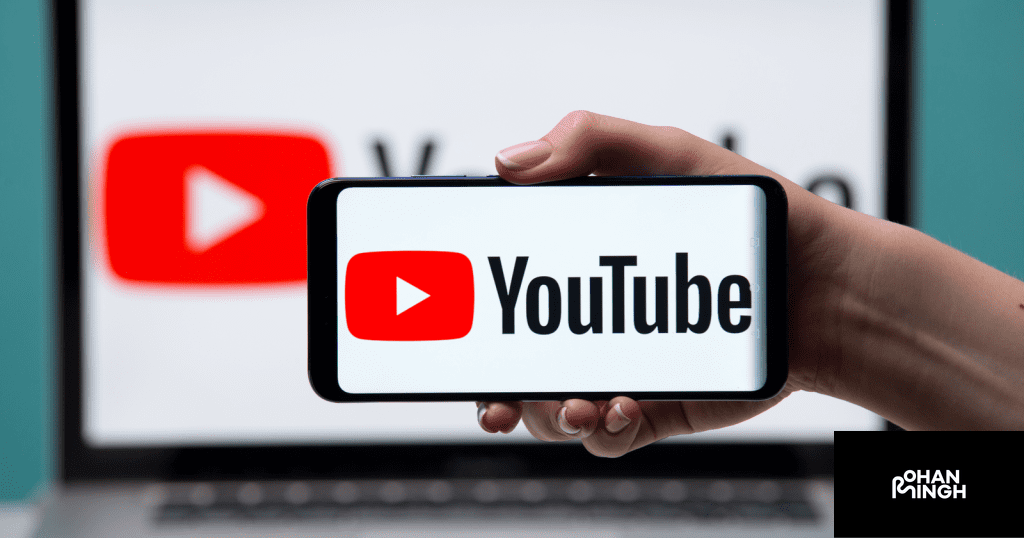Want to Master YouTube SEO in 2023? Boost Your Rankings with These Tips!

What is Youtube SEO?
YouTube SEO is the practice of optimizing your videos to rank higher in YouTube’s search results and gain more visibility and organic traffic. As one of the largest global search engines, YouTube offers a tremendous opportunity for content creators and businesses to reach their target audience and increase brand awareness. By focusing on key ranking factors such as video titles, descriptions, tags, audience retention, and engagement metrics, you can improve your video’s visibility and maximize its reach. In this article, we will explore effective YouTube SEO strategies for 2023, including the use of relevant keywords, optimizing video content and thumbnails, leveraging analytics tools, and understanding the importance of user experience and subscriber count. So, let’s dive in and learn how to rank YouTube videos fast using the latest YouTube SEO tips and techniques.
Table of Contents
ToggleWhy Should You Focus on Video SEO?
Video SEO, especially for YouTube, has become an essential marketing strategy in 2023. With over 2 billion monthly active users, YouTube is the second-largest search engine, making it a goldmine for businesses and content creators. Focusing on Video SEO can bring several key benefits.
Firstly, optimizing various video elements like file name, title, description, likes, comments, and views with retention can significantly impact YouTube rankings. By strategically incorporating relevant keywords, metadata, and engaging content, you can increase your video’s presence in search results and attract more viewers.
Secondly, effective Video SEO can drive organic traffic to your channel. By ranking higher in search results, your videos have a better chance of being discovered by a wider audience. This increased visibility not only boosts your video views but also helps you engage with your target audience.
Additionally, Video SEO allows you to improve the user experience on your channel. By optimizing video elements like custom thumbnails, tags, and descriptions, you can provide clear information about your video’s content and attract more viewers. This, in turn, increases audience retention and watch time, signaling to YouTube’s algorithm that your video is valuable and deserving of higher rankings.
In conclusion, focusing on Video SEO is crucial for businesses and content creators on YouTube. It not only drives organic traffic and increases visibility but also improves user engagement and contributes to overall channel growth. By optimizing various video elements and implementing effective strategies, you can establish a strong presence on YouTube in 2023 and beyond.
Let's talk about your future project!
Eager to collaborate on your upcoming endeavor? Let's explore and ignite the potential of your next big idea, shaping a promising future together!
Tips to Rank YouTube Videos Fast in 2023
As an AI Marketing Expert, I’m here to provide you with proven tips to rank your YouTube videos fast in 2023. Let’s dive in!
1. Keywords are key: Conduct thorough keyword research to identify target keywords relevant to your video’s topic. Utilize tools like Google Keyword Planner or TubeBuddy to find high-ranking keywords with substantial search volume.
2. Optimize video elements: Optimize your video titles, descriptions, and tags with your target keywords. Craft compelling titles that grab attention and accurately describe your content. Write detailed descriptions that include relevant keywords and provide valuable information to viewers.
3. Boost watch time: Focus on creating engaging, high-quality content that keeps viewers hooked. YouTube places great emphasis on watch time, so keep viewers engaged and entertained by delivering valuable content from start to finish. Encourage viewers to watch more of your videos using end screens and playlists.
4. Video optimization: Compress your video file size to ensure faster loading times. Add custom thumbnails to attract clicks and make your video visually appealing. Incorporate relevant tags to help YouTube understand your video’s content better.
5. Build your channel’s brand: Consistency is key. Develop a unique style and brand identity for your channel, including a consistent logo, color scheme, and tone of voice. Encourage viewers to subscribe, like, comment, and share your videos, as these engagement metrics also influence rankings.
Remember, ranking high in YouTube search results takes time and effort. Combine these tips with consistent content creation, promotion, and audience engagement to improve your video ranking and grow your channel in 2023. Keep optimizing and experimenting with different strategies to stay ahead in the YouTube SEO game.

Utilize Target Keywords
To effectively rank your YouTube videos and increase visibility on the platform, it is essential to utilize target keywords strategically. Conducting thorough keyword research is crucial to identify the keywords that are relevant to your video’s topic and have considerable search volume. Take advantage of tools like Google Keyword Planner or TubeBuddy to find high-ranking keywords with substantial search volume. By incorporating these target keywords into your video titles, descriptions, and tags, you enhance the discoverability of your content. Craft compelling titles that accurately describe your video and grab the attention of viewers, and then ensure that these keywords are also included in your video description to provide valuable information to your audience. Remember that successfully implementing target keywords is an essential aspect of YouTube SEO in 2023, as it helps search engines understand the context and relevance of your video content. So, strive to optimize your video elements with these keywords and increase the chances of your videos ranking higher in the search results.
How to Choose the Right Target Keyword?
Choosing the right target keyword is crucial for optimizing YouTube videos and improving their search rankings in 2023. To ensure maximum visibility and reach, it is important to consider factors such as search volume, competition, and relevance to the video content.
Firstly, conducting thorough keyword research using tools or applications such as Google Keyword Planner or SEMrush will provide insights into the search volume and popularity of specific keywords. Look for keywords that have a high search volume but relatively low competition. Long-tail keywords, which are more specific and less competitive, can be particularly beneficial for niche video topics.
Secondly, it is essential to incorporate the target keyword naturally throughout the video. Include it in the video title, video description, and tags, as these elements play a crucial role in search engine optimization. Additionally, prioritize the inclusion of the target keyword in the captions or transcript of the video, as search engines can index and rank this text-based content.
Remember to avoid keyword stuffing, as it can negatively impact the video’s visibility and user experience. Instead, focus on integrating the target keyword in a way that enhances the value and relevance of the video content.
By choosing the right target keyword based on search volume, competition, and relevance, YouTube creators can increase the visibility and discoverability of their videos, ultimately attracting more views and engagement from their target audience.
Best Practices for Optimizing Your Target Keyword
When it comes to optimizing your YouTube videos for search engines and attracting more views, utilizing the best practices for your target keyword is crucial. Here are the steps you need to follow:
1. Conduct Keyword Research: Begin by using tools like Google Keyword Planner or SEMrush to identify relevant keywords related to your video topic. Be sure to target long-tail keywords with moderate search volume and low competition to maximize visibility.
2. Incorporate Keywords Strategically: Once you have selected your target keyword, incorporate it naturally into your video title, description, and tags. This helps search engines understand the subject matter and improves the video’s ranking potential. Aim to include the target keyword at least 4-5 times throughout the content.
3. Avoid Keyword Stuffing: While incorporating keywords is important, avoid keyword stuffing at all costs. Overloading your video with excessive keywords can lead to penalties and harm your user experience. Instead, focus on creating high-quality content that resonates with your audience.
4. Optimize Textual Content: Don’t forget to optimize the text-related content surrounding your video. This includes captions, transcripts, and any additional written descriptions. Use the target keyword naturally to improve visibility and indexing by search engines.
By following these best practices, you can enhance your video’s chances of ranking higher in search results and attracting a larger audience. Remember, YouTube SEO in 2023 is all about providing value to your viewers while strategically optimizing your content for search engines.

Optimize Your Video Title and Description
When it comes to optimizing your YouTube videos for search engine rankings, paying attention to your video titles and descriptions is crucial. These elements provide valuable information to both users and search engines about the content of your video. To rank your videos fast and improve your YouTube SEO in 2023, it’s essential to follow these best practices.
1. Include Relevant Keywords: Incorporate your target keyword naturally in your video title and description. This helps search engines understand the topic of your video and improves its visibility in search results. Utilize keyword research tools like Google Keyword Planner or SEMrush to identify the most relevant and popular keywords for your video content.
2. Craft Engaging Titles: Your video title should be attention-grabbing and accurately reflect the content. Use your target keyword at the beginning of the title, as it holds more weight in search rankings. Consider adding numbers, compelling adjectives, or questions to make your title more enticing to viewers.
3. Write Compelling Descriptions: The video description should provide a concise summary of the video’s content. Include your target keyword near the beginning of the description, but make sure it flows naturally. Aim for a description of at least 250-300 words to provide sufficient details and context.
4. Add Timestamps and Links: To improve user experience and engagement, consider adding timestamps in the description that allow viewers to navigate to specific sections of your video. Additionally, include relevant links to external resources or other related videos to provide additional value to viewers.
By optimizing your video titles and descriptions with relevant keywords and engaging content, you increase the visibility of your YouTube videos and attract more targeted views in 2023. Remember to analyze your video’s performance using tools like YouTube Studio and Google Analytics to continually refine your YouTube SEO strategy.
Tips for Creating a Captivating Video Title
Creating a captivating video title is essential for grabbing the attention of viewers and improving your YouTube SEO in 2023. Here are some tips to help you craft compelling titles:
1. Keyword Inclusion: Include your target keyword within the video title. This helps search engines understand the topic of your video and improves its visibility in search results.
2. Promise Something: Make sure your title promises something of value to the viewers. Whether it’s providing information, solving a problem, or entertaining them, a promise piques curiosity and encourages clicks.
3. Be Captivating: Use compelling adjectives, numbers, or questions to make your title stand out. Capture the viewer’s interest by emphasizing the unique aspects of your video and why it is worth their time.
4. Attract Clicks: Keep your title concise and straightforward, while still being captivating. Use language that evokes curiosity and urgency to entice viewers to click and watch your video.
Remember, a captivating video title is the first impression viewers have of your video. By incorporating relevant keywords, making a promise, being compelling, and attracting clicks, you can increase your chances of getting more views and engagements.
Strategies for Writing an Effective Description
When it comes to YouTube SEO in 2023, writing an effective video description is crucial for ranking your videos and attracting viewers. Here are some strategies to consider:
1. Compelling Intro: Start with a captivating intro that highlights the benefits viewers will gain from watching your video. This will grab their attention and encourage them to click.
2. Detailed Description: Provide a clear and detailed description of your video’s content. This helps search engines understand what your video is about and improves its visibility in search results.
3. Call to Action (CTA): Include a strong call to action in your description to encourage viewer engagement. Whether it’s subscribing to your channel, liking the video, or leaving a comment, a clear CTA prompts viewers to take action.
4. Relevant Links: Add relevant links in your description to provide additional resources and drive traffic to your website or social media profiles. This can enhance the value of your video and improve user experience.
Remember, avoid keyword stuffing and excessive use of hashtags. Incorporate your target keyword, “YouTube SEO 2023,” naturally throughout the description without sacrificing readability.
To assist you in optimizing your video descriptions, consider using keyword research tools like Google Analytics or SEO tools like SEMrush and Ahrefs. These tools provide valuable insights on popular keywords and help you refine your video description strategy.
By implementing these strategies, you can improve your YouTube video’s visibility, attract more viewers, and enhance your overall YouTube SEO in 2023.

Generate Relevant Keywords and Search Terms
Generating relevant keywords and search terms is a crucial aspect of YouTube SEO in 2023. By optimizing your video content with the right keywords, you can increase its visibility in search results and attract the right audience. Here are some strategies and tools to help you generate relevant keywords and search terms for your YouTube videos.
1. Keyword Research Tools: To identify popular keywords that align with your video topic, use keyword research tools like Google Analytics, SEMrush, and Ahrefs. These tools provide data on monthly search volume, competition, and related keywords, helping you make informed choices for your video optimization.
2. Long-Tail Keywords: Targeting long-tail keywords can be highly effective in driving targeted traffic to your videos. Long-tail keywords are more specific phrases that have lower competition but higher intent from potential viewers. Tools like AnswerThePublic and Ubersuggest can help you find long-tail keywords based on user queries.
3. YouTube Search Bar: Utilize the YouTube search bar to your advantage. As you type relevant keywords related to your video topic, YouTube’s autocomplete feature will suggest popular search terms that people are actively searching for. Incorporate these search terms naturally into your video title, description, and tags.
4. Competitor Analysis: Analyze the videos in your niche that are already ranking well. Look for the keywords they are targeting in their video titles, descriptions, and tags. While it’s important to stand out with unique content, taking inspiration from successful videos can provide valuable insights into relevant keywords in your industry.
By implementing these strategies and utilizing keyword research tools, you can generate relevant keywords and search terms that will help improve the visibility and ranking of your YouTube videos in 2023. Remember to incorporate the keyword “YouTube SEO 2023” naturally throughout your video content to optimize its visibility in search results.
How to Generate Relevant Keywords?
To generate relevant keywords for your YouTube videos and optimize them for better rankings in 2023, a structured approach is essential. Here’s how you can go about it:
1. Utilize Keyword Research Tools: Start by using powerful tools like Google Keyword Planner, TubeBuddy, vidIQ, Keyword Tool, aHrefs, and SEMrush. These tools provide valuable insights into search volume, competition, and related keywords. Conduct thorough research to identify relevant keywords related to your video topic.
2. Leverage YouTube Autosuggest: Another effective technique is to leverage YouTube’s autosuggest feature. Begin typing relevant keywords in the search bar and observe the suggested search queries. These suggestions are based on popular terms actively searched by users. Incorporate these suggestions naturally into your video title, description, and tags for optimization.
3. Long-Tail Keywords: Consider using long-tail keywords. These are specific phrases with lower competition but higher intent from viewers. Research keywords using tools like Google Trends to gauge their popularity and to discover long-tail keywords that generate substantial traffic.
4. Analyze Competitors: Perform competitive analysis to identify common characteristics of videos ranking on the first page of search results. Examine the keywords they target, assess their video titles, descriptions, and tags. While it’s crucial to create unique content, gaining inspiration from successful videos can provide valuable insights into relevant keywords in your industry.
By employing strategic keyword research and analysis, you can generate a list of relevant keywords that will enhance your YouTube SEO in 2023. Remember to choose keywords wisely, considering their relevance to your video content and their potential to attract your target audience.
Popular Types of Keywords to Consider in 2023
1. Trendy Keywords: Stay updated with the latest trends in your niche as they can be valuable keywords to target. Use tools like Google Trends or social media platforms to identify trendy keywords that have a high search volume. By incorporating these keywords into your video titles, descriptions, and tags, you can attract a larger audience searching for the latest content.
2. Long-Tail Keywords: Long-tail keywords are longer, more specific phrases that have lower competition but higher intent from viewers. They target a narrower audience with a higher likelihood of conversion. Use keyword research tools to discover long-tail keywords relevant to your video topic. Incorporate these keywords organically throughout your video content for better search rankings and user engagement.
3. Video-Specific Keywords: Use keywords that directly relate to the content of your video. For example, if you are creating a tutorial video, include relevant instructional keywords in your title and description. This helps search engines understand the context of your video and increases the chances of ranking higher in search results for specific queries.
4. Question-Based Keywords: Many users search for answers to specific questions on YouTube. Incorporate question-based keywords in your video titles and descriptions to capture these search queries. Answer the question effectively in your video content to provide value to viewers and increase user engagement.
5. Competitor Keywords: Analyze your competitors’ videos that are performing well in terms of views and engagement. Identify the keywords they are targeting in their video titles, descriptions, and tags. While it’s important to create unique content, gaining inspiration from successful videos and incorporating relevant competitor keywords can improve your video’s visibility and reach.
By considering these popular types of keywords in your YouTube SEO strategy for 2023, you can optimize your videos for better search rankings, increased visibility, and improved user engagement. Remember to use keyword research tools and analytical data to make informed decisions and maximize the impact of your content.

Analyze Search Engine Ranking Factors
Analyzing search engine ranking factors is crucial for effective YouTube SEO in 2023. Understanding the factors that influence a video’s ranking on search engines can help content creators optimize their videos for better visibility and reach. By considering these ranking factors, such as video titles, descriptions, keywords, and user engagement, creators can improve their chances of ranking higher in search results and attracting a larger audience. In this article, we will delve into the various ranking factors that impact YouTube SEO in 2023 and provide tips on how to leverage them to rank YouTube videos fast.
1. Video Titles:
Crafting compelling and keyword-rich video titles is essential for YouTube SEO. Including the target keyword, “YouTube SEO 2023,” in the title can improve the video’s visibility. Additionally, using attention-grabbing and descriptive titles that accurately convey the video’s content can attract more clicks and increase engagement.
2. Video Descriptions:
Well-optimized video descriptions provide additional context and information about the video. Incorporating relevant keywords, including “YouTube SEO 2023,” throughout the description can help search engines understand the video’s content. Additionally, including timestamps and relevant links within the description can enhance user experience and increase audience retention.
3. Relevant Keywords:
Identifying and incorporating relevant keywords, including long-tail and question-based keywords, is crucial for YouTube SEO. Utilize keyword research tools, such as Google Keyword Planner or SEMrush, to discover potential keywords with a high search volume. Strategically placing these keywords in titles, descriptions, and tags can improve the video’s chances of appearing in relevant search queries.
4. User Engagement:
Engaging viewers and encouraging user interaction with the video are vital for YouTube SEO in 2023. Factors such as watch time, audience retention, and user engagement metrics like likes, comments, and shares play a significant role in video rankings. Creating valuable and high-quality content that resonates with the target audience can boost user engagement and contribute to better rankings.
In conclusion, analyzing and leveraging search engine ranking factors is essential for successful YouTube SEO in 2023. By optimizing video titles, descriptions, utilizing relevant keywords, and prioritizing user engagement, content creators can increase their chances of ranking their YouTube videos fast and attracting a larger and more engaged audience.
What are the Most Important Ranking Factors for YouTube Videos?
When it comes to ranking YouTube videos, several factors come into play. YouTube considers various metrics and data to determine the visibility and rank of a video. Let’s look at some of the most important ranking factors for YouTube videos in 2023.
1. Total number of views: The more views a video receives, the higher its chances of ranking well. Views indicate popularity and attract more attention from both users and YouTube’s algorithm.
2. Watch time: YouTube values watch time as it indicates how engaging and valuable a video is to viewers. Longer watch times signal high-quality content, leading to better rankings.
3. Subscriber count: The number of subscribers a channel has is another important ranking factor. Channels with a large subscriber base tend to have more authority, leading to higher rankings.
4. Video quality: YouTube prioritizes videos with high production value and good audiovisual quality. Invest in creating visually appealing and well-edited videos to increase your chances of ranking higher.
5. Relevance to the search term: YouTube pays close attention to how well a video matches a user’s search query. Optimize your video’s title, descriptions, and tags with relevant keywords like “YouTube SEO 2023” to increase its relevance to the intended audience.
Additionally, YouTube considers metrics like click-through rate, average view duration, likes, dislikes, and personalization for each user. To optimize your YouTube video rankings in 2023, focus on these essential ranking factors and leverage tools like YouTube Analytics, vidIQ, or TubeBuddy to gain insights and improve your YouTube SEO efforts.
How Can You Monitor and Track Your Ranking Performance?
Monitoring and tracking your YouTube ranking performance is crucial for the success of your video SEO strategy. By keeping a close eye on your rankings, you can identify what is working and what needs improvement. It allows you to adapt your approach, optimize your content, and ultimately enhance your visibility on the platform.
YouTube Analytics provides valuable insights into your video’s performance. It offers a comprehensive range of metrics, including demographics, traffic sources, engagement stats, and search statistics. By analyzing this data, you can gain a better understanding of your target audience, identify the most effective traffic sources, and measure user engagement.
In addition to YouTube Analytics, using YouTube ranking tracker tools can further enhance your monitoring efforts. Tools like TubeRanker, GeoRanker, and TubeBuddy allow you to track your positions on YouTube for specific keywords, monitor the search volume of those keywords, and estimate the number of views your video can potentially receive. These tools empower you to analyze your progress and make data-driven decisions to improve your rankings.
In conclusion, monitoring and tracking your YouTube ranking performance through YouTube Analytics and ranking tracker tools are essential for optimizing your video SEO strategy. By leveraging these insights, you can continuously improve your content and increase your chances of success in the highly competitive YouTube landscape.

Conclusion
In conclusion, YouTube SEO is crucial for ranking your videos and maximizing their visibility to your target audience. By implementing the practical tips discussed in this article, you can enhance your video rankings and increase organic traffic to your channel.
Firstly, conducting thorough keyword research using tools like TubeBuddy and GeoRanker will help you identify relevant and high-performing keywords to optimize your content. Incorporate these keywords strategically in your video titles, descriptions, and tags to improve your chances of appearing in search results.
Next, focus on creating engaging and informative video content that caters to your target audience’s needs and preferences. Keep your videos well-structured and visually appealing, and use custom thumbnails to entice viewers to click on your videos.
Remember to optimize your video metadata, such as closed captions and transcripts, to enhance accessibility and improve search engine crawlers’ understanding of your content.
Furthermore, promoting your videos through social media, collaborations, and embedding them in blog posts or websites can drive more traffic and increase user engagement.
Regularly monitoring your video performance using YouTube Analytics and ranking tracker tools enables you to make data-driven decisions and refine your SEO strategy accordingly.
By prioritizing YouTube SEO and implementing these practical tips, you can ensure that your videos rank higher, reach a larger audience, and achieve your content marketing goals in 2023.
FAQ's
What is YouTube video SEO?
YouTube video SEO refers to the practice of optimizing your videos to increase their visibility and rankings on YouTube’s search results. It involves implementing strategies and techniques to improve your video’s chances of being discovered by your target audience.
Why is YouTube video SEO important?
YouTube is the second-largest search engine, with billions of monthly searches. By optimizing your videos for search, you can attract more organic traffic and reach a wider audience. It helps you increase the visibility of your videos and grow your channel’s subscriber count.
What are the key factors for YouTube video SEO?
Some key factors for YouTube video SEO include relevant keywords, engaging video content, video titles and descriptions, custom thumbnails, closed captions, user engagement metrics, and social media promotion. These factors help YouTube’s algorithm understand your video’s content and rank it higher in search results.
Which tools can I use for YouTube video SEO in 2023?
There are several tools available to aid in YouTube video SEO, such as TubeBuddy, VidIQ, and Google Trends. These tools help with keyword research, video optimization, competitor analysis, and tracking performance metrics. Utilizing these tools can significantly enhance your YouTube video SEO strategy.
How can I optimize my video titles, descriptions, and tags?
To optimize your video metadata, use relevant keywords in your titles, descriptions, and tags. Conduct keyword research to identify popular and relevant keywords that align with your video content. Incorporate these keywords strategically to improve your video’s visibility in search results. Aim for a catchy and descriptive title, a detailed and informative description, and tags that accurately reflect your video’s content.
Similar articles about Activation Strategy:
Ready to Revolutionize Your Resume with ChatGPT, Your AI-Powered Resume Helper?, Can Anthropic's New Claude AI Outshine ChatGPT?, Want to Level-Up Your Performance Max Campaigns with Google Apps Script?, Transform Your Marketing Strategies with AI: How and Why?
How Can You Harness the Power of AI and Still Safeguard Your Privacy?, Can You Revolutionize Fictional Worldbuilding Using ChatGPT?, Want to Master YouTube SEO in 2023? Boost Your Rankings with These Tips!, How Can You Reset and Optimize Your ChatGPT for Unmatched Results?
What Marketing Strategy Did Cheetos Employ for Plants vs. Zombies Collaboration?
Rohan Singh | May 1, 2024 | Acquisition What Marketing Strategy Did Cheetos Employ for Plants vs. Zombies Collaboration? Background on Cheetos Cheetos, a popular brand of cheese-flavored snacks, has made a name for itself with its bold and playful marketing strategies. Known for its irreverent and creative campaigns, Cheetos has consistently found unique ways […]
What Marketing Strategy Did Cheetos Employ for Plants vs. Zombies Collaboration?
Rohan Singh | May 1, 2024 | Acquisition What Marketing Strategy Did Cheetos Employ for Plants vs. Zombies Collaboration? Background on Cheetos Cheetos, a popular brand of cheese-flavored snacks, has made a name for itself with its bold and playful marketing strategies. Known for its irreverent and creative campaigns, Cheetos has consistently found unique ways […]
What Differentiates Differentiated Marketing Strategy from Undifferentiated?
Rohan Singh | April 30, 2024 | Acquisition What Differentiates Differentiated Marketing Strategy from Undifferentiated? Definition of Differentiated Marketing Strategy A differentiated marketing strategy is a targeted approach that focuses on creating unique products or services to meet the specific needs and preferences of different customer segments. It recognizes that customers have diverse tastes, preferences, […]
What Sets Apart the Marketing Concept from a Marketing Strategy?
Rohan Singh | April 29, 2024 | Acquisition What Sets Apart the Marketing Concept from a Marketing Strategy? Definition of Marketing Concept The marketing concept is a philosophy that places the customer at the center of all marketing activities. It focuses on understanding the needs and wants of the target market and delivering value to […]
Which promotional mix strategy targets market channel members?
Rohan Singh | April 28, 2024 | Acquisition Which promotional mix strategy targets market channel members? When it comes to promoting a product or service, companies utilize various strategies to reach their target audiences. One key strategy that directs marketing efforts toward market channel members is known as trade promotion. Trade promotion is a type […]
Should charter schools adopt regional or national marketing strategies?
Rohan Singh | April 27, 2024 | Acquisition Should charter schools adopt regional or national marketing strategies? Purpose When it comes to marketing strategy in the field of charter schools, two broad approaches can be taken: regional and national. Each approach has its purpose and benefits depending on the goals and aspirations of the charter […]
Share :






